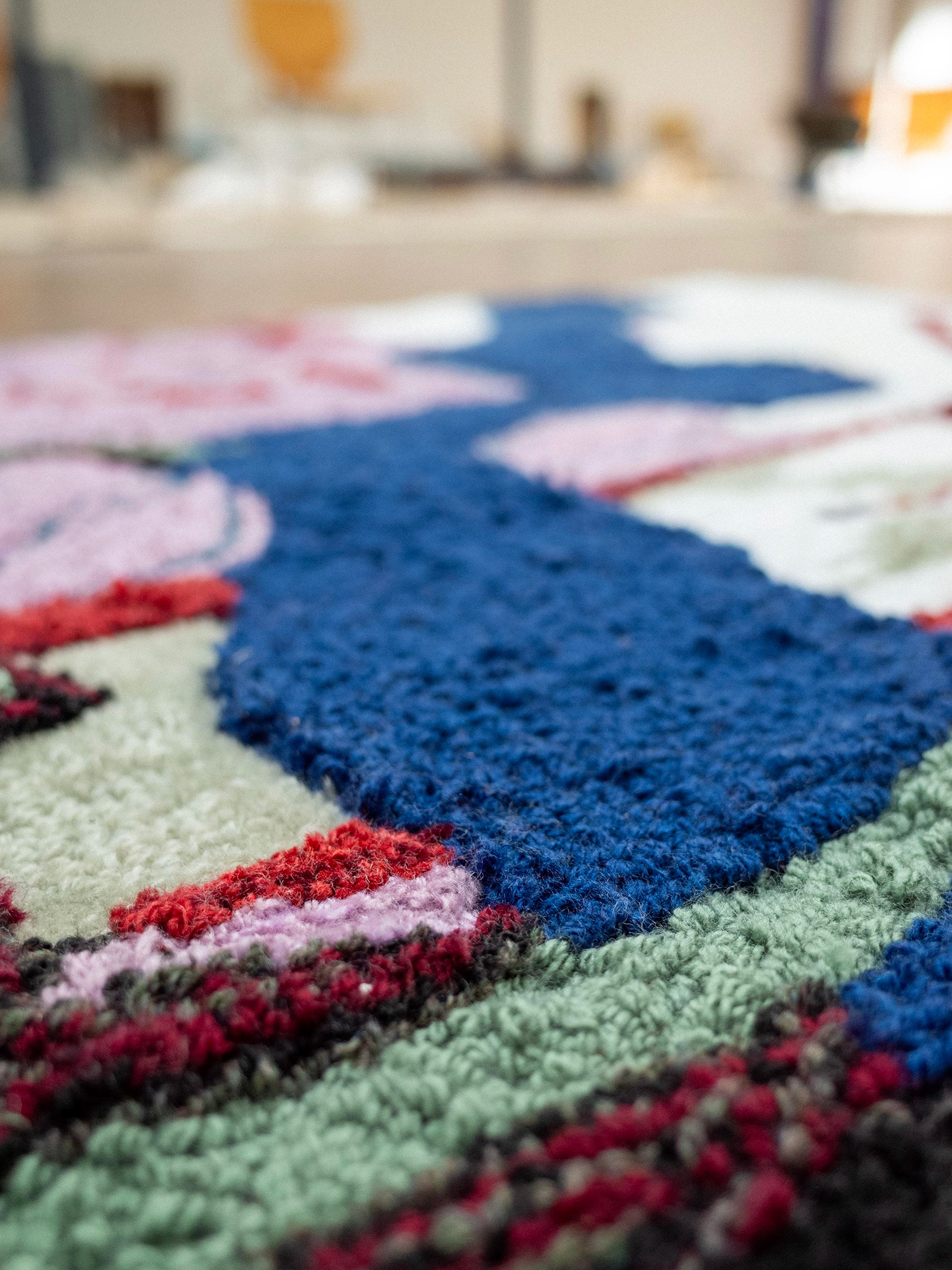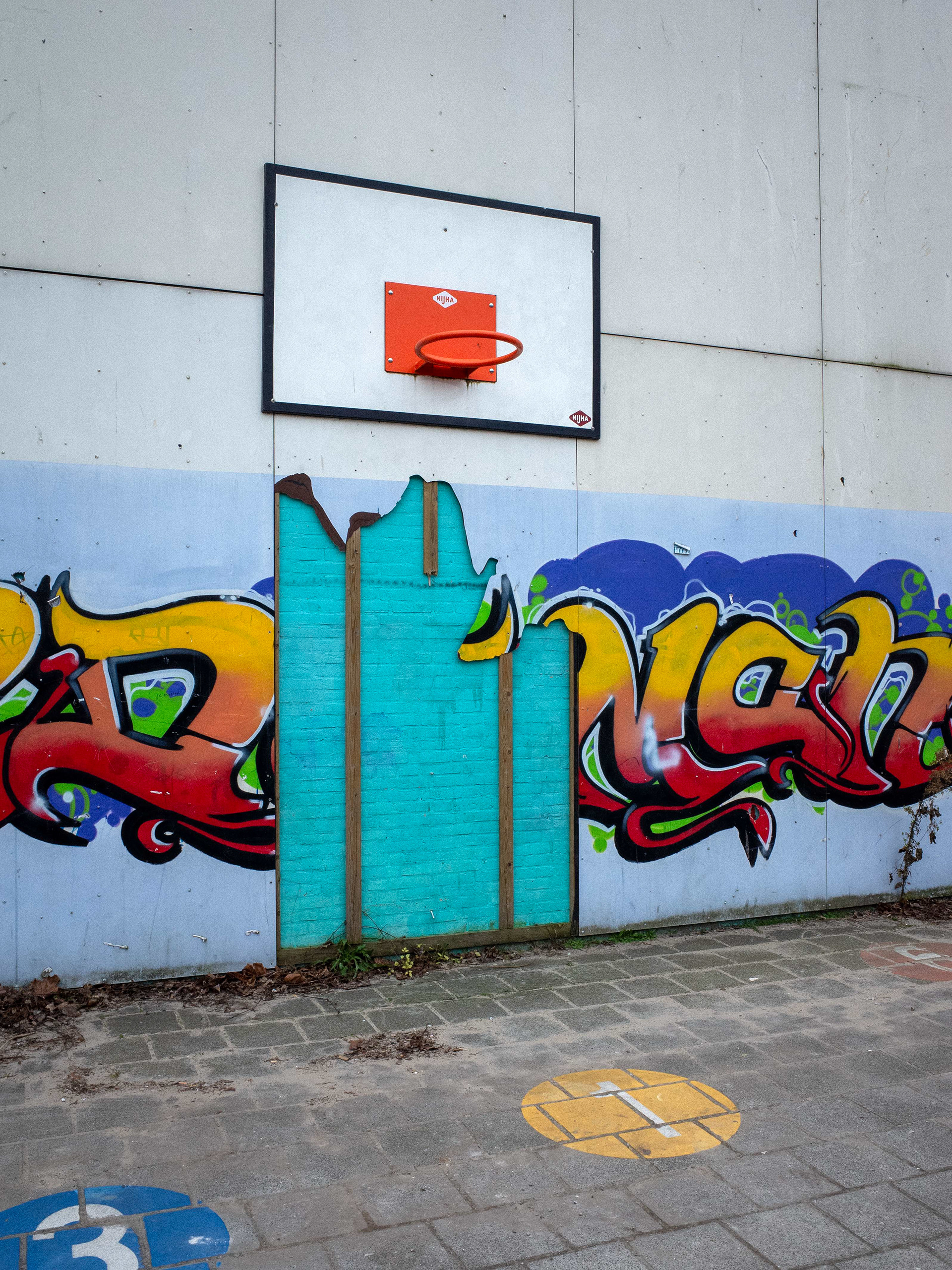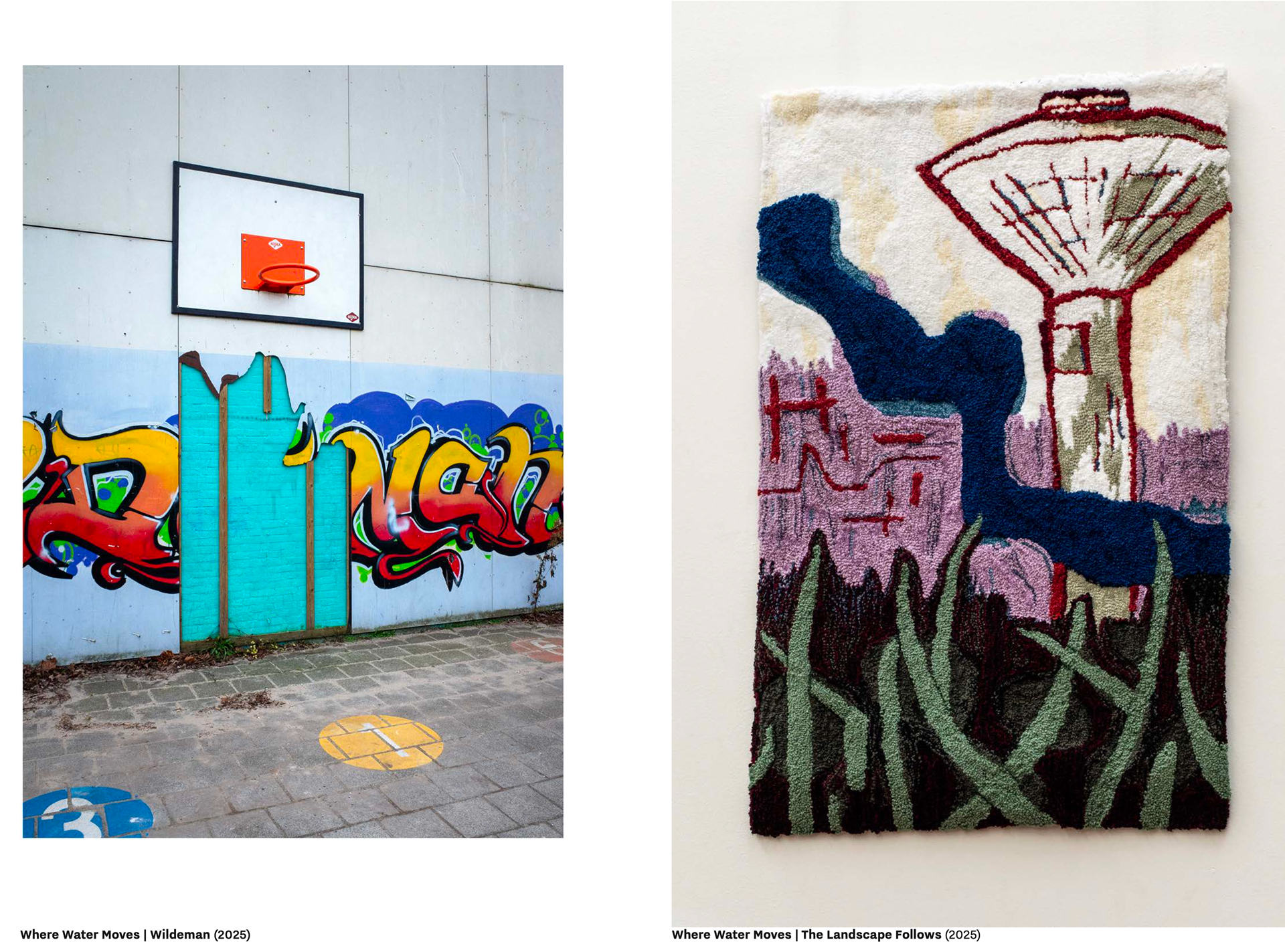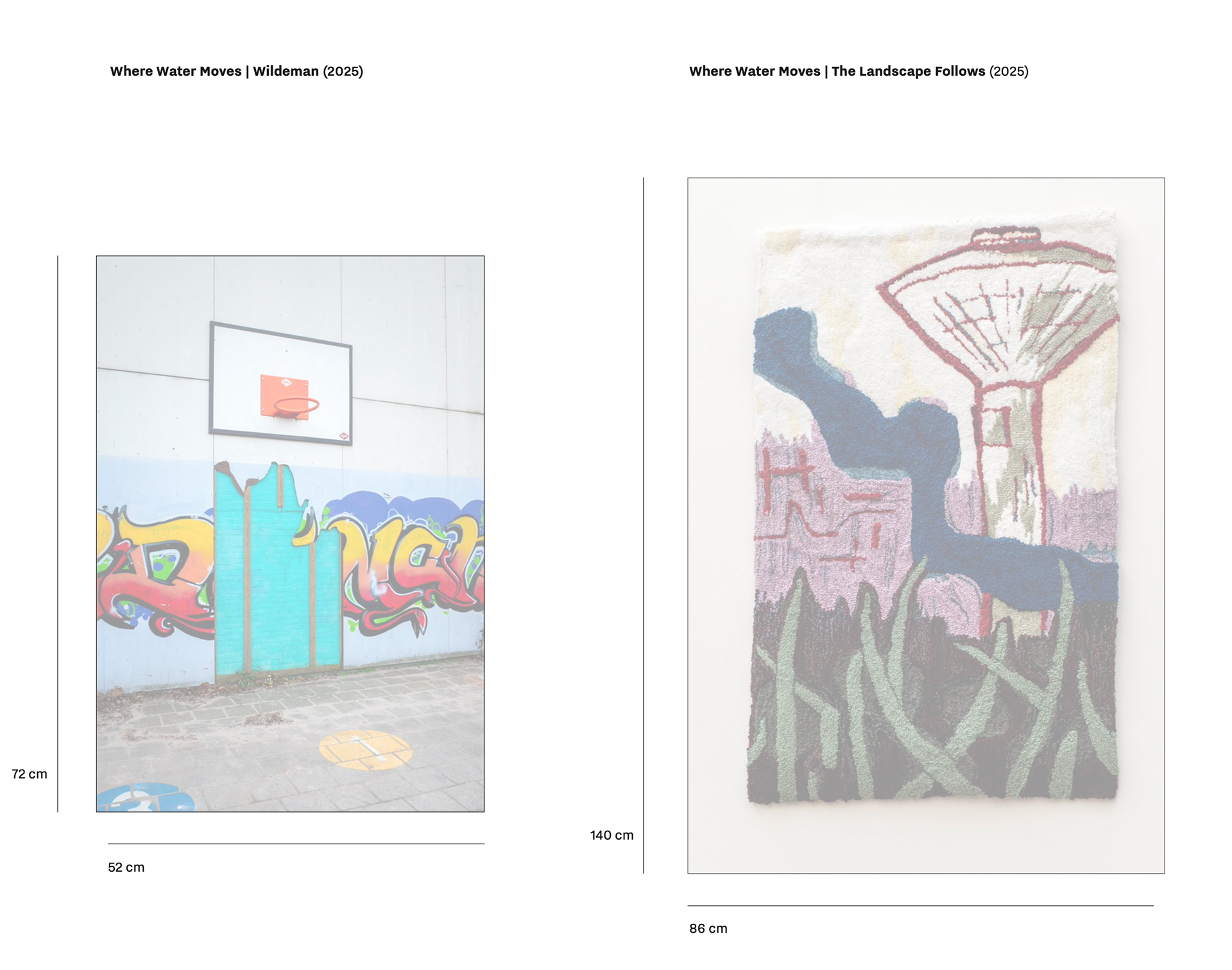This water tower, constructed in 1960, was a familiar landmark along the A326 highway — one of the main routes that connected my childhood home to the wider world. Nicknamed the Vliegende Schotel (Flying Saucer), it still stands as an imposing presence. But the question for the future is: what kind of landscape will surround it then?
Our rivers and delta are changing. Growing up between the Waal and Maas, I saw how floods and high water shaped our landscape and communities. Now, as I research Dutch waterways, I’ve come to understand how these systems are shifting — shaped by natural migration processes, but also by human interventions. This will have inevitable consequences to our landscape.
My previous neighbourhood, Amsterdam Nieuw-West, is the greenest district in the city — one of the main reasons I chose to live here. Still, in some places, the only signs of nature are the weeds stubbornly pushing their way through cracks in the concrete. Yet with a bit of imagination, I can picture a river flowing, and suddenly, a connection between the two landscapes emerges.
The work Where Water Moves is part of my ongoing project Every Space is Touched by Past Ways of Life, in which personal archives merge with constructed, almost surreal landscapes. I explore how places shape us, and in turn, how we imprint our histories onto them.
TENTOONSTELLING/EXHIBITIONS groep
2025, Nieuwelingen, Van Eesterenmuseum, NL
2025, Nieuwelingen, Van Eesterenmuseum, NL



